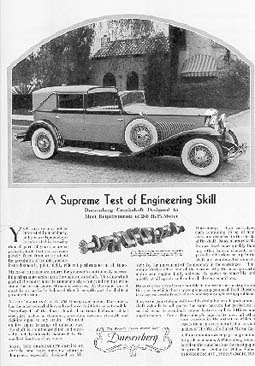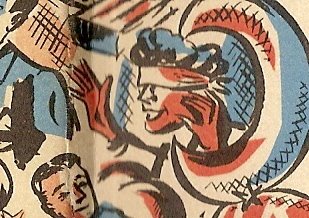
Come to our house on Valentine night
At eight o'clock or so.
Dan Cupid will be there all right
With his arrows and his bow.
There'll be many lads and lasses here,
So watch for Cupid's dart.
The only thing you have to fear
is losing your fond heart.
That's right. Cupid's first name is Dan, apparently. Or it's an honorific. Or some kind of title. I've not been able to find out. I do know this: The "Dan" in Dan Cupid comes from William Shakespeare's "Love's Labours Lost," viz:
This wimpled, whining, purblind, wayward boy,
This signor-junior, giant-dwarf, Dan Cupid,
Regent of love-rimes, lord of folded arms,
The anointed sovereign of sighs and groans,
Liege of all loiterers and malcontents,
Dread prince of plackets, king of codpieces,
Sole imperator and great general
Of trotting paritors -- O my little heart!
As with a lot of the things Shakespeare wrote, this is about sex. But it's written in a Walls of Jericho type of code, at least to the modern untrained ear, so that takes the curse off it.
Now, you know, great entertainer that you are, that nothing says love like pink and white streamers strung from the ceiling as your guests play a rousing variation of . . . musical chairs:
An aside from the blogger: I absolutely love these songs. Not because they heark back to a bygone era -- I never saw that era at all; I was born in the early 1970s. But I love them because of their tuneful innosence. Try doing a living picture to some of the "love" songs we have today and you'd be very embarrassed. Make the whole Dan Cupid thing look pretty innocent, you would.
Aside aside, the only experience I have with living pictures is from "The Three Amigos," when El Guapo has his men posed in their weird little bacchinalian tableau. This game actually sounds like a lot of fun.
As does this one, though it introduces a few anachronisms between our world today and the world of the 1930s.
Now that we're bummed out by the gap of time that removes the authenticity of our party from the era of Woolworths "When You and I Were Young, Maggie," to the era of Wal-Mart and "I Want Your Sex," it's time to move on to refreshments. Cokesbury suggests the following:
This wimpled, whining, purblind, wayward boy,
This signor-junior, giant-dwarf, Dan Cupid,
Regent of love-rimes, lord of folded arms,
The anointed sovereign of sighs and groans,
Liege of all loiterers and malcontents,
Dread prince of plackets, king of codpieces,
Sole imperator and great general
Of trotting paritors -- O my little heart!
As with a lot of the things Shakespeare wrote, this is about sex. But it's written in a Walls of Jericho type of code, at least to the modern untrained ear, so that takes the curse off it.
Now, you know, great entertainer that you are, that nothing says love like pink and white streamers strung from the ceiling as your guests play a rousing variation of . . . musical chairs:
Mixer: Heart Going to Jerusalem. This game is played somewhat like going to Jerusalem. Pin hearts on the window curtains or put them up with thumb tacks. There should be one less hearts than guests. While the music plays all march around the room. When the music stops, they all put one hand on a heart, and there must be only one hand on each heart. The person who does not have a heart to put his hand on must retire from the game and take his place in the center of the room. When the music starts again, the leader takes down one of the remaining hearts, and so on, until only one heart remains. If the game is continuing too long, the leader make take down more than one heart each time.If you sense your friends are getting bored with this game, remove five hearts each time. Or simply skip this game entirely, since none of us are in the second grade any more. Find something s little more active, something to challenge your guests' manual dexterity:
Valentine Relay Race. Divide into two or more groups. About twelve to fifteen on a side is a good number for this relay. Each group stands one behind the other, facing three circles eighteen inches in diameter which have been drawn with chalk on the floor. Three Indian clubs or pop bottles for each circle have been dressed up with crepe paper to represent valentines or cupids. Theya re standing in the circles. When the whistle is blown, the one on the front of the line runs to the circle and stes the bottles out of the circle. He must leave them all standing up. He runs back and touches off the next one in front of the line and takes his place at the back of the line. The next one must place the clubs or bottles back into the circle. This continues until all have had a chance. The group that finishes first may give a yell and perhaps win a prize.Perhaps a yell like "Huzzah! Huzzah! Huzzah!" or "We're not in second grade any more!" And they're right. This isn't elementary school. This is an adult party. Time to get out the paste.
Making Valentines. Each couple is provided with some magzines, a tube of paste, a pair of scissors, and a cardboard of blank sheeet of paper. Each couple is to make a valentine, using pictures and words cut from magazines. A good prize should be given for the best one and another for the most comic one.But what if the best one is a comic one? What if your guests eat the paste? And what if, by the time next Valentines Day comes along that print media is officially dead -- will your guests first have to search out appropriate photos and phrases on the Internet, print them out and then paste them up? Or will, by then, someone have invented an iPaste iPhone app? Those of you into this kind of technological marvel/crap, get on it straight away. In the meantime, we'll be indulding in living tableaux at our house, perhaps re-enacting Dan Cupid from Shakespeare's play:
Living Pictures. Make large frame about eight feet square. Decoare with valentine colors. Have lights in the fram so that other lights may be turned out except for those about the fram. Have some good soloist or a quartet sing some of the old love songs while others represent the chraacters and stand behing the picture frame. There should be a curtain drawn over the frame, and the curtain should be drawn after each song is finished. Some suggestions would be: "In the Good Old Summer Time," "Love's Old Sweet Song," "Put on Your Old Gray Bonnet," "I want a Girl Like the Girl That Married Dear Old Dad," "When You and I were Young, Maggie," "Let me Call You Sweetheart," "School Days," When Your Hair Has Turned to Silver."
An aside from the blogger: I absolutely love these songs. Not because they heark back to a bygone era -- I never saw that era at all; I was born in the early 1970s. But I love them because of their tuneful innosence. Try doing a living picture to some of the "love" songs we have today and you'd be very embarrassed. Make the whole Dan Cupid thing look pretty innocent, you would.
Aside aside, the only experience I have with living pictures is from "The Three Amigos," when El Guapo has his men posed in their weird little bacchinalian tableau. This game actually sounds like a lot of fun.
As does this one, though it introduces a few anachronisms between our world today and the world of the 1930s.
Heart Archery. Draw a large heart on a piece of cardboard about thirty inches square. Draw circles on the heart. In the circle near the center write "Heart Smasher." The ring next to center should be laveled "Lovers." The next circle should be marked "Somewhat Affectionate." The next circle should be marked "Indifferent to Love," and the outsice circle "Woman Hater, Man Hater." Bows and arrows can be purchase at a five-and-ten-cent store. If arrows with rubber tips are used, they may be touches to a rubber stamp or lampblack so that they will make a mark on the target. Burt cork will also do.Okay, this game calls for some obscure tools" Burnt cork or lampblack. A rubber stamp. Little bows and arrows, of either the pointy or suction-cup variety. So just head down to the five-and-ten . . . you don't have one of those? Really? All you have is a soulless big box stuffed with crud made in China? It's sad, but the closest institution we have to the good old five-and-dime is the dollar store. And they're filled with the cheap stuff from China. Someone needs to invent a time machine just so we can play this game properly. I'd give up Cokesbury for a few weeks in the era of Woolworths, Dapper Dan pomade, tin lizzies and old-timey music. Must be time for a "O Brother Where Art Thou" screening again.
Now that we're bummed out by the gap of time that removes the authenticity of our party from the era of Woolworths "When You and I Were Young, Maggie," to the era of Wal-Mart and "I Want Your Sex," it's time to move on to refreshments. Cokesbury suggests the following:
At this season of the year, ice-cream companies and bakeries are making their products in heart molds. Serve ice-cream in heart mold and heart-shaped cookies or cakes. Another suggestion bould be cherrly Jello with shipped cream and cookies with white frosting and heart-shaped candies and this served with coffee. And attractive plate could be arranged with sandwiches cut in heart shape and a basket of candies served with hot chocolate with marshmallows or whipped cream. Kisses or taffy could be served with any of these and would be appropriate.Sigh. ice-cream companies and bakeries, not the pre-fab stuff sold at the supermarket. Bakeries. We used to have one in town. We used to have several. My grandmother worked at one, and they made the best cakes and rolls. All from scratch. So delicious. Now our rolls come in plastic bags and our tomatoes come with the UPC label applied to them with a laser printer. I think I'm going to curl up on the floor, listen to these old-time songs, and dream a while . . .
. . . you did notice you got to use your whistle again, right? . . .
Oh yeah. Next week: It's time to ramp up the Valentines Day possibilities with Week Six: Famous Lovers' Party.












